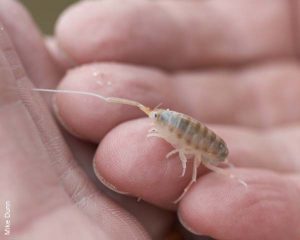 There are more than 6,000 of their kind, species that vary in colour, habitat and behaviour. Yet most know little about the tiny invertebrate scientists call Amphipoda. Since it also looks a lot like a more popular creature, the shrimp, it’s often confusing for homeowners when an amphipod infestation occurs. But how can you spot the signs before it’s too late? Below are a few things that’ll help you be prepared and ready to fight these “lawn shrimp” pests.
There are more than 6,000 of their kind, species that vary in colour, habitat and behaviour. Yet most know little about the tiny invertebrate scientists call Amphipoda. Since it also looks a lot like a more popular creature, the shrimp, it’s often confusing for homeowners when an amphipod infestation occurs. But how can you spot the signs before it’s too late? Below are a few things that’ll help you be prepared and ready to fight these “lawn shrimp” pests.
What are Amphipods?
Amphipods are a kind crustacean that lives both in water and on land. They are very similar in appearance to shrimp but are much tinier with adults measuring 5 mm – 20 mm on average. Their bodies are elongated in shape, shiny and smooth. These creatures are also known as land hoppers – that’s because they jump like fleas — or lawn shrimp.
The adult amphipods can live up to a year and feed on bacteria, plants and animals depending on each species. Though the majority of amphipods live in the oceans, the terrestrial amphipods are the ones which most homeowners have to worry about. The best-known home invader of its kind is the Arcitalitrus Sylvaticus.
These amphipods are most active at night as this is when they feed. They are scavengers by nature and breed several times per year, usually during wet seasons.
Where are Infestations Most Likely to Occur?
Knowing where an infestation is most likely to occur will help you not only spot one, but best of all prevent one from happening in the first place. The key to this is remembering that an amphipod’s behaviour is largely affected by the amount of moisture in the environment.
- Pool
Lawn shrimp pests like moisture so it’s no wonder they’d aim for your pool. When an infestation occurs in a home owner’s pool it can cause serious problems including clogging of filters. Since infestation is most likely to occur during periods of excessive rain, be sure to clean pool filters often during this period.
- Garage
Amphipods like moisture but not too much. When rain falls they are likely to enter your home by crawling beneath your doors to avoid excess moisture. Your garage is one spot they’ll likely end up in such instances. If the moisture level is optimal – not too much or too little – they will thrive there. To avoid an infestation, keep moisture down. Clean up puddles, use a dehumidifier, de-clutter and so forth.
- Fish Tanks
What’s in your fish tank? If you see dozens of shrimpy pests appear out of nowhere, they are likely amphipods. They’ll enjoy the controlled settings, especially since it’ll be abundant with food sources. Though many species are herbivores, others are scavengers and will eat any form of animal life their little mouths can handle.
- Garden
Terrestrial amphipods can thrive beneath stones or decaying vegetation. They like soft, moist soil which can be very abundant in gardens. Some species also jump about like fleas, making gardening where an infestation is present very annoying. You’ll be able to distinguish between amphipods and fleas as you look closely at the body. An amphipod’s body is usually brownish-white and will turn red when it dies. Also, unlike fleas, the amphipod doesn’t bite.
Managing Moisture Within and Outside Home
Amphipods are very vulnerable to water loss because unlike insects whose exoskeleton possess a waxy layer, their bodies are not designed to manage water loss on its own. They can die pretty easily in the right environment. To manage an infestation, apply the following procedures:
- Reduce moisture in home, especially after excessive rainfall
- Clean pool filters regularly
- Reduce irrigation, where possible, in gardens and lawns
- Remove excessive rocks which often protect amphipod environs
- Clean up mulch, or debris around property including nearby pavements and drains
- Use non-chemical methods that help to dry out your environment
Remember moisture control is the key! Also, be sure you are certain that it’s an amphipod infestation before applying treatment. Since amphipods are some of the least known pests, be careful to avoid drawing hasty conclusions. If you have an infestation and you’re not sure if it’s due to amphipods, contact us today.
For further information you may be interested in these articles:
7 Ways to Make Your Home Ant-Proof

No Comments